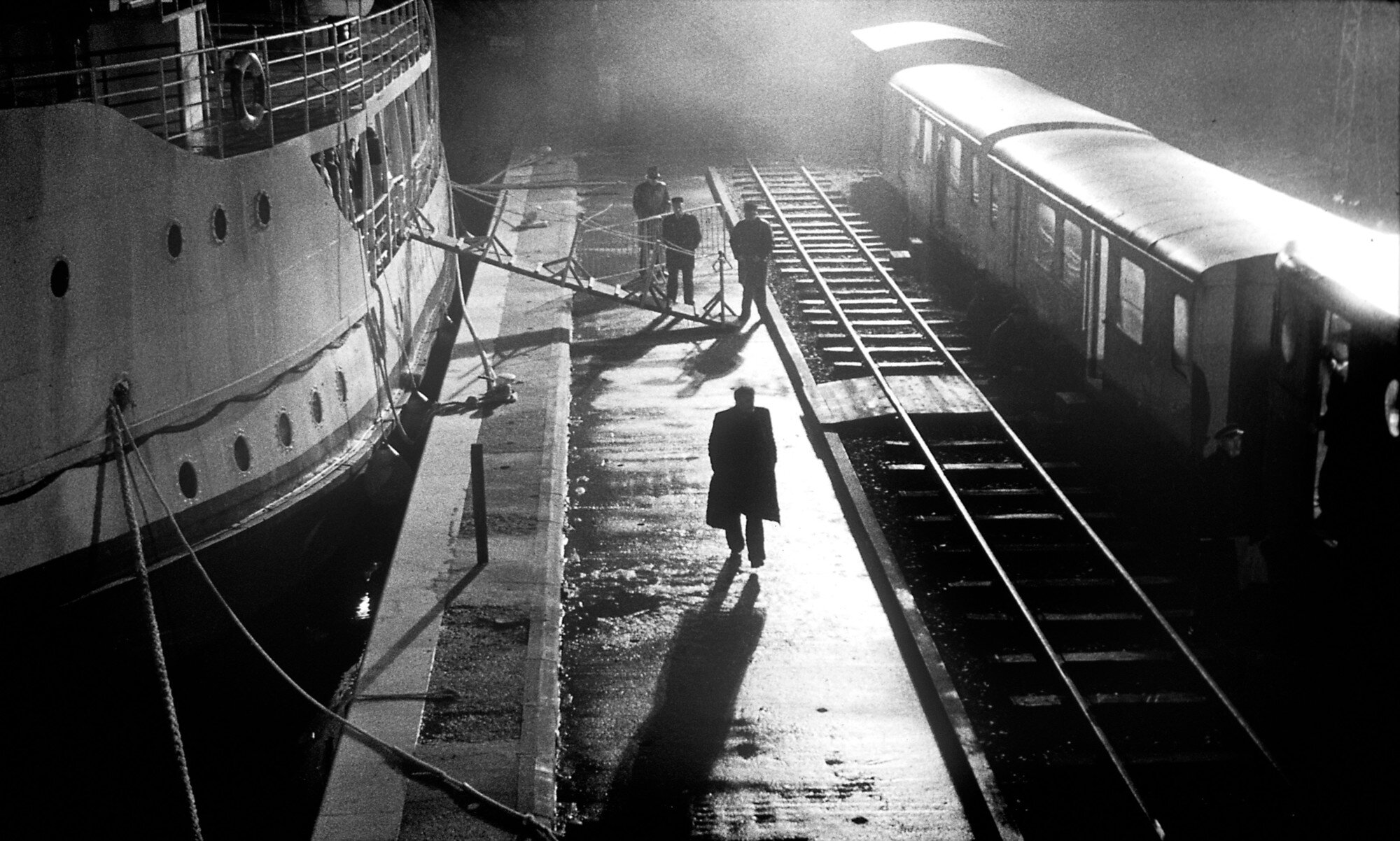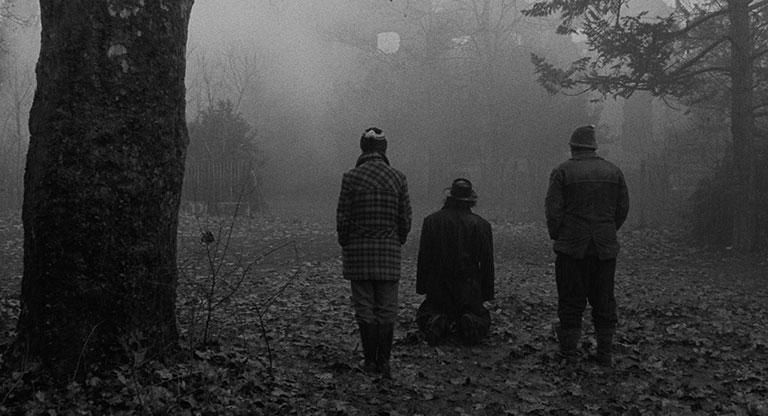After The Man from London’s troubled production, Béla Tarr considered himself retired. He would finally call it quits a few years later following the appropriately apocalyptic The Turin Horse (2011). The final card in London’s end credits reads “2004–2007,” a lamentation that this two-hour Georges Simenon adaptation took longer to shoot than his 450-minute magnum opus, Sátántangó (1994). The film is an oddity in Tarr’s oeuvre due to the presence of a bona fide international movie star (Tilda Swinton) and its plot’s origin as a pulpy French paperback. But it’s also an intriguing junction of his preoccupations, with moments cheekily lifted from Sátántangó and others prefiguring The Turin Horse. According to Tarr, it was Simenon’s fatalistic, oppressive atmosphere that drew him to the material rather than the temptation of a more traditional narrative. The Man from London has it both ways, if one is at all susceptible to the dramatic potential of Tarr’s glacial pacing, which moves at the speed of its ambling human subjects rather than the frenetic nervous system pleasingly mirrored in most thrillers. He distends his source’s procedural plot mechanisms, and in so doing slowly boils the film’s protagonist, a noir mainstay of the average-Joe-in-the-crosshairs variety.
Miroslav Krobot plays Maloin, a railway switch operator whose station overlooks a dock where, one evening, he observes two men tussling over a briefcase. One of the men and the case wind up in the water, while the other flees the scene, oblivious to his crime’s witness. The next morning Maloin fishes out the MacGuffin and finds it full of soggy British pound notes. While he’s silently contemplating a blood-stained windfall, the murderer begins tailing him through the town’s narrow streets, and an English inspector arrives on behalf of a London theater promoter who’s been robbed.
Anyone familiar with Tarr’s work since the late ’80s will know what to expect: long, churning shots of breathtaking monochromatic beauty that unfurl for up to 11 uninterrupted minutes (equivalent to a full reel of Kodak film stock, i.e., the maximum length of a single celluloid take) in which doleful characters and the camera slowly circumnavigate one another while contemplating humanity’s existential misfortune. While time lurches inexorably forward in each shot, gathering unbearable mass, Tarr fills the soundtrack with cyclical rhythms. These run from the metronomic (the uniform clanking of train wheels) to the variable (the lapping of the tide, a child juggling a football). The repetition recalls the endless accordion drone of Sátántangó’s party scene (recreated here in miniature with two of the earlier film’s performers making hilariously drunken cameos) and lays track for The Turin Horse’s agonizing cycle of eating potatoes and removing boots. The juxtaposition of time’s undeterred arrow and loops of activity circumscribed by it suggests a Sisyphean corkscrew that employs us all. Like the rest of Tarr’s work, The Man from London is a cosmic joke in which joy and purpose are only ever stolen from a fiendishly empty universe.
The Man from London screens tonight, June 12, on 35mm at Film at Lincoln Center. It will be introduced by director Béla Tarr.




